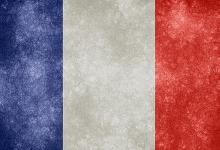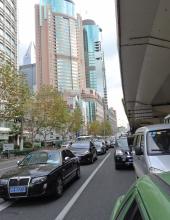
For a big country that is behind only Russia, Germany and Turkey in aggregates production – not to mention one that is at the centre of the biggest business story in the aggregates world currently - France is still subdued in terms of activity and hoped-for growth, writes Julie-Anne Ryan.
It sits in the middle of the tables for production per capita and predicted tonnages, despite producing almost ten per cent of the output for the 35 aggregate producing countries and associates listed by the
The second quarter of 2014 saw the building and public works sectors weaken, even against a background of a big increase on pre-depression figures, and we reported six months ago that the expected upturn in the residential building market had yet to materialise. This still holds true.
Figures available now show that France’s construction materials market took a downward turn again during the final quarter of 2014. Ready-mixed concrete sales were down 9.9% year-on-year for the quarter, and down 1.3% compared to the third quarter of 2014. For December alone, a 9.7% fall year-on-year was seen, and a 5% dip was recorded for the year as a whole.
Aggregates sales were down 11.3% year-on-year for the quarter and down 1.7% compared to Q3 2014. There was a 7.5% decline in aggregate sales in December 2014 compared to December 2013, while for the year as a whole, production fell 5%.
Table 1
| Sand & gravel (mts) | Crushed rock (mts) | Marine (mts) | Manufactured (mts) | Recycled (mts) | Total production | |
|---|---|---|---|---|---|---|
| France | 132 | 196 | 7 | 5 | 20 | 360 |
| Of EUPG total | 1482 | 1989 | 62 | 51 | 183 | 3772 |
Updated tables show movement over the past ten years in terms of general production – figures from
| 2003 | 2012 | 2013 | & 2013/2012 | |
|---|---|---|---|---|
| Turnover (in millions of €) | 2,982 | 3,802 | 3,892 | +2.4 |
| Number of firms | 1,800 | 1,550 | 1,540 | -0.6 |
| Number of quarries/pits | 2,690 | 2,578 | 2,651 | +2.8 |
| Production per firm (1000t) | 222 | 232 | 238 | +2.6 |
| Production per quarry | 149 | 139 | 138 | -0.7 |
| Production per capita | 6.7 | 5.7 | 5.7 |
From the same source we can see the number of firms by production class:
| Production in 000s of tonnes |
Number of firms |
Production in millions of tonnes |
Production % | |
|---|---|---|---|---|
| Loose rock | > 1000 > 500 > 250 > 100 > 1 |
22 69 135 280 584 |
46.7 77.7 101.0 124.7 135.5 |
34 57 75 92 100 |
| Limestone | > 1000 > 500 > 250 > 100 > 1 |
16 49 111 206 430 |
31.3 52.8 74.6 90.4 98.6 |
32 54 76 92 100 |
| Igneous | > 1000 > 500 > 250 > 100 > 1 |
23 54 106 184 313 |
50.1 71.3 89.5 102.7 107.0 |
47 67 84 96 100 |
In the case of the mineral materials sector companies, 97% are SMEs, and 70% employ fewer than 10 employees. But at the other end of the spectrum, France boasts huge global players such as
It has 2,566 employees working from five cement plants, three grinding centres, 141 concrete plants and 42 aggregate quarries. The biggest story in the industry over recent months has been the imminent creation of the world’s biggest cement company, due to be formed in the €42 billion merger of Lafarge – founded in Ardèche in 1833 – with Switzerland-based Holcim. It has been planned that the new group’s central functions will be split between Switzerland and France, and synergies of €1.4 billion (US$1.65 billion) are predicted via the merger. Bruno Lafont, the initially proposed chief executive officer of the proposed entity, has said that everything was on track to be completed during the first half of 2015.
The latest news is that revised merger terms have been agreed, including an agreement to select an alternative Lafarge senior executive to Lafont to be chief executive officer of the new setup, after Holcim’s board of directors rejected the original deal citing the Swiss company’s better sales and profits over the previous 12 months.
Meanwhile, the French government is opposed to any absorption of Lafarge by Holcim as it is unwilling to see the new entity lose its grounding in France.
Aside from the merger, business continues at Lafarge with a solid growth in the first half of 2014, followed by an easing of volume trends in the third quarter with “a more challenging comparable in Europe, mostly in France”. The firm reported declines in France where the construction market remains subdued. It stated that “construction activity was soft over the first nine months, in line with our expectations. In the residential sector, housing permits were back to positive territory after more than two years of decline but short-term, housing starts are down, while the infrastructure segment is still challenging. Year-to-date, our cement, aggregates and readymix volumes contracted by 6%, 2% and 7%, respectively.” On a comparable basis, EBITDA increased 10% versus the first nine months of the year, but contracted 10% in the third quarter, mostly reflecting the impact of the lower volumes sold in France.
Elsewhere in the industry, sustainability is a pressing item on the agenda of public interest. In 2013, the UNPG organised Open Door events with all sectors of UNICEM and about 100 sites opened up for guided visits. In 2014, UNPG - in line with the National Biodiversity Strategy (NBS) - created practical online guidance to support companies to commit to NBS. CEMEX is one of the leading producers of aggregates in France with more than 90 locations throughout the country and an average production of 18 million tons of aggregates. In 2013 it boasted a workforce of 2000, with 330 sites spread over the French territory, and sales of 5.6 million cubic metres of ready-mix concrete and 18 million tons of aggregates. One of its quarries – Lescheroux – has just received an award from UNICEM to recognise its biodiversity achievements. The quarry boasts curlew, copper marshes, great crested newt, alpine newt, grass snake and bulbous foxtail as some of the remarkable plant and animal species found there.
A large country with a large, assertive aggregates industry, France is hosting








